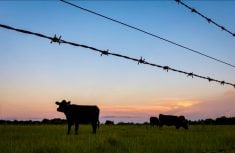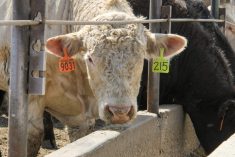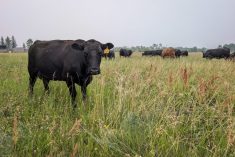MarketsFarm — If Agriculture and Agri-Food Canada’s (AAFC) latest monthly principal field crop estimates hold true, mustard is having a bounce-back year.
High prices for the seed led to nearly double the acres planted for the 2022-23 marketing year at 556,000, compared to 289,000 the previous year. As a result, 177,000 tonnes were produced in Canada in 2022, more than the previous two years combined (161,000).
Walter Dyck, the Lethbridge-based general manager of Olds Products’ seed division, said this year’s mustard seed harvest went well with the help of more typical weather conditions in Western Canada last summer as well as dry conditions in October.
Read Also

U.S. grains: Soy futures set 15-month high after China agrees to purchases
U.S. soybean futures reached a 15-month high on Thursday after President Donald Trump’s administration said top-importer China agreed to buy tens of millions of tons of American crops in the next few years as part of a trade truce.
“Everything that was ready to be harvested or needed to be harvested (came) off. From that standpoint, it was good,” Dyck said, adding that while Alberta had its best year since 2018, areas in southwestern Saskatchewan struggled with drought and other problems.
“The yield was quite a disappointment for many growers just given the lack of rainfall and some of the larger growing areas like southwest Saskatchewan had grasshopper and flea beetle issues as well,” he said.
Dyck also said that brown and Oriental mustard seed usually have higher yields than the more widely grown yellow mustard seed and 2022 was no different.
Demand for mustard seed has stayed steady, with Canada expected to export 110,000 tonnes during the 2022-23 marketing year according to AAFC, only 4,000 more than the previous year. The same increase in tonnes is expected for domestic use at 22,000 tonnes.
Dyck said unlike most crops, demand is unlikely to change no matter the price.
“For many mustard users, there is no substitute for mustard. The price doesn’t affect how much is used,” he said.
The high-delivered bid for yellow mustard is $1.20/lb., five cents higher than the previous month, according to Prairie Ag Hotwire. For brown mustard, the high-delivered bid increased by 14 cents/lb. at $1.15. For Oriental mustard, the high-delivered bid was $1.20/lb., a monthly rise of 19 cents. Yellow mustard is steady from one year ago, while brown mustard declined by five cents/lb. and Oriental mustard rose by 35 cents/lb.
While carryout stocks are set to be replenished by this year’s harvest — from 6,000 tonnes at the end of 2021-22 to a projected 60,000 tonnes this marketing year — prices remain very high.
“I think there’s a realization that yields in some areas were not good and given the fact there was no surplus from (2021-22), I think there was a realization that perhaps whoever’s buying at those higher spot levels, they’re coming in hoping to avoid what happened last year which was a steady increase in the spot market through these months and into the following year,” Dyck said.
“Given the additional acres (this year), the supply is there, but the market is being bid up simply because there doesn’t seem to be as many sellers as there are buyers at this time.”
However, Dyck believes prices will stabilize in the coming months as mustard buyers realize there are sufficient stocks.
“I don’t believe that we’ll see spot prices continue to move higher to get to the end of the year and into early 2023,” he said. “Unless there’s a signal in the market that contract acres for 2023 are not shaping up to be close to the 500,000-acre mark for Canada. It’s quite important Canada gets up to that number again.”
— Adam Peleshaty reports for MarketsFarm from Stonewall, Man.












